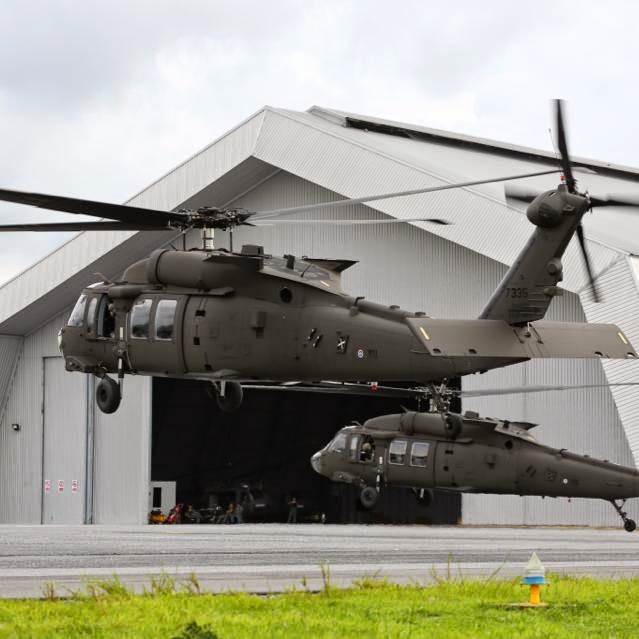Achieving Excellence: Trick Techniques for UH 60 Helicopter Upkeep
Achieving Excellence: Trick Techniques for UH 60 Helicopter Upkeep
Blog Article
Navigating Uh 60 Helicopter Regulations and Compliance Demands

Regulatory Framework Review
The governing structure regulating UH-60 helicopter operations incorporates a facility set of standards and regulations developed by aviation authorities. These regulations are made to make sure the risk-free and efficient operation of UH-60 helicopters in numerous atmospheres. The Federal Aviation Management (FAA) plays a main role in developing and implementing these policies, which cover a variety of functional aspects, consisting of airworthiness requirements, pilot credentials, maintenance needs, and functional treatments.
Compliance with these regulations is crucial for helicopter operators to maintain the greatest levels of security and operational stability. Failing to comply with these laws can lead to significant repercussions, consisting of mishaps, injuries, and governing sanctions. As a result, helicopter operators need to remain informed regarding the most up to date regulative growths and guarantee that their procedures remain in full compliance with all relevant guidelines and criteria.
Airworthiness Regulations and Examinations
In the middle of the regulative framework governing UH-60 helicopter procedures, an essential emphasis pushes compliance with Airworthiness Directives and performing thorough examinations to promote security requirements and operational integrity. Airworthiness Regulations (ADs) are released by air travel authorities to deal with unsafe problems in aircraft, including the UH-60 helicopter, and mandate certain actions to be taken by operators or proprietors. Compliance with Advertisements is required, and failing to stick to these regulations can lead to major consequences, consisting of grounding of the airplane.
Regular examinations are extremely important to making sure the airworthiness of UH-60 helicopters. These evaluations encompass a variety of checks, from regular daily inspections conducted by pilots prior to and after trips to much more detailed set up maintenance assessments executed by accredited technicians. Additionally, special assessments might be required based on certain problems or events. By adhering to a strict assessment routine, operators can discover and attend to possible issues quickly, consequently boosting the safety and security and dependability of UH-60 helicopter procedures.
Pilot Credentials and Training

Pilot training for UH-60 helicopters is extensive and covers a variety of subjects, consisting of airplane systems, emergency procedures, navigation, and mission-specific training. Additionally, pilots undergo simulator training to exercise numerous emergency situation situations in a controlled atmosphere. This training assists pilots develop the necessary skills to handle challenging scenarios properly.


Moreover, ongoing training and expert advancement are crucial for UH-60 pilots to stay present with the latest policies, innovation, and ideal techniques. By spending in pilot credentials and training, operators can enhance security, enhance performance, and make sure conformity with regulative requirements in the procedure of UH-60 helicopters.
Functional Limitations and Needs
Pilot qualifications and training function as the structure for recognizing the functional constraints and needs connected with UH-60 helicopter procedures (uh 60). These functional limitations are implemented to guarantee the security of the crew, passengers, and the airplane itself. Functional restrictions Extra resources may include factors such as weather, weight limitations, altitude constraints, and functional borders. It is vital for pilots to be well-versed in these constraints to make enlightened decisions during trip operations. Additionally, conformity demands, such as adhering to particular flight courses, interaction protocols, and emergency situation treatments, are vital for maintaining functional safety and governing conformity. Pilots must remain present with all functional restrictions and requirements with regular training, instructions, and evaluates to minimize dangers and ensure secure and efficient UH-60 helicopter procedures. By prioritizing adherence to these functional standards, pilots can improve the total safety and performance of their missions while promoting regulatory criteria.
Emergency Procedures and Compliance Testing
Efficient emergency procedures and detailed conformity screening are critical components of maintaining operational safety and regulatory adherence in UH-60 helicopter procedures. Emergency situation treatments incorporate procedures for numerous circumstances, consisting of engine failings, fires, hydraulic problems, and much more. Pilots and team members must be well-versed in these procedures to respond promptly and properly in emergency situations. Routine conformity testing guarantees that the helicopter meets all regulatory needs established forth by air travel authorities. This testing entails thorough inspections, checks, and evaluations to website link validate that the airplane is airworthy and in compliance with all appropriate regulations.
Compliance screening likewise encompasses tools onboard the UH-60, such as communication systems, navigating instruments, and safety and security gear. Ensuring that all devices is functioning properly and meets governing requirements is important for secure operations. In addition, compliance screening may entail simulations of emergency situation scenarios to assess the staff's feedback and the helicopter's performance under stress. By focusing on emergency situation treatments and conformity testing, UH-60 operators can minimize risks and demonstrate their dedication to safety and security and regulatory compliance.
Verdict
In verdict, adherence to governing structure, conformity with airworthiness directives, pilot qualifications and training, operational limitations, and emergency procedures are vital for browsing the guidelines and demands of operating a UH-60 helicopter. uh 60. It is important for operators to prioritize safety and ensure full conformity with all relevant laws to keep the airworthiness and operational honesty of the aircraft
Navigating the regulatory landscape bordering UH-60 helicopter operations demands a nuanced understanding of the detailed web of regulations and compliance needs.Conformity with these policies is important for helicopter operators to preserve the highest levels of safety and operational honesty.In the middle of the regulative framework controling UH-60 helicopter operations, a vital focus exists on compliance with Airworthiness Directives and conducting thorough examinations to promote security standards and functional reliability.Reliable emergency treatments and extensive conformity testing are crucial parts of preserving functional safety and governing adherence in UH-60 helicopter operations. Normal compliance screening guarantees that the helicopter fulfills all regulative needs set forth by aeronautics authorities.
Report this page